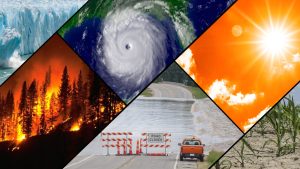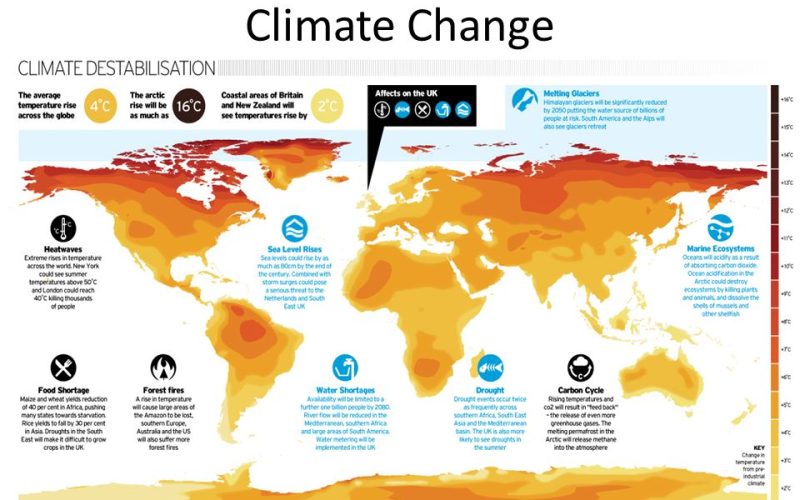Climate change has emerged as one of the most pressing global challenges of the 21st century, influencing various aspects of human life, including travel and tourism. The impact of climate change on popular travel destinations is profound, affecting ecosystems, weather patterns, and the overall attractiveness of these locations. This article delves into the multifaceted effects of climate change on tourism, examining how rising temperatures, changing precipitation patterns, and extreme weather events are reshaping the landscape of global travel.
Science Behind Climate Change
To understand the impact of climate change on popular travel destinations, it is crucial to comprehend the underlying science. Climate change refers to significant and lasting changes in the Earth’s climate, primarily driven by human activities such as burning fossil fuels, deforestation, and industrial processes. These activities increase the concentration of greenhouse gases (GHGs) in the atmosphere, leading to global warming and altering weather patterns.

Greenhouse Gas Emissions
Greenhouse gases, including carbon dioxide (CO2), methane (CH4), and nitrous oxide (N2O), trap heat in the Earth’s atmosphere, causing temperatures to rise. This phenomenon, known as the greenhouse effect, is essential for maintaining the planet’s temperature but becomes problematic when GHG concentrations exceed natural levels.
Rising Temperatures
One of the most noticeable impacts of climate change is the increase in global temperatures. According to the Intergovernmental Panel on Climate Change (IPCC), the Earth’s average surface temperature has risen by approximately 1.2 degrees Celsius since the pre-industrial era. This warming trend has far-reaching consequences for travel destinations, particularly those dependent on specific climatic conditions.
Impacts on Coastal Destinations
Coastal destinations are among the most vulnerable to climate change due to their proximity to the ocean and reliance on stable sea levels and weather patterns. The impact of climate change on coastal travel destinations manifests in several ways:
Sea Level Rise
Rising sea levels, driven by the melting of polar ice caps and thermal expansion of seawater, pose a significant threat to coastal areas. Popular travel destinations such as the Maldives, Venice, and Miami are experiencing increased flooding, coastal erosion, and saltwater intrusion into freshwater resources. These changes not only disrupt tourism infrastructure but also threaten the livelihoods of local communities.
Coral Bleaching
Coral reefs, vital to marine biodiversity and tourism, are highly sensitive to temperature changes. Elevated sea temperatures cause coral bleaching, a phenomenon where corals expel the symbiotic algae living in their tissues, leading to their death. Iconic destinations like the Great Barrier Reef in Australia and the Maldives are witnessing extensive coral bleaching, diminishing their appeal to tourists and affecting marine ecosystems.
Extreme Weather Events
Climate change is linked to an increase in the frequency and intensity of extreme weather events such as hurricanes, typhoons, and cyclones. These events can devastate coastal destinations, causing widespread damage to infrastructure, disrupting travel plans, and posing safety risks to tourists. The Caribbean, Southeast Asia, and the Gulf of Mexico are particularly prone to such events, impacting their tourism industries.

Impacts on Mountainous Destinations
Mountainous regions, known for their scenic beauty and outdoor recreational activities, are also experiencing the impact of climate change. The effects on these destinations are multifaceted and can be observed in various forms:
Glacial Retreat
Glaciers, a significant attraction in many mountainous regions, are retreating at an alarming rate due to rising temperatures. This phenomenon affects popular travel destinations such as the Swiss Alps, the Himalayas, and the Andes. The loss of glaciers not only diminishes the aesthetic appeal of these regions but also disrupts water supplies, affecting local communities and downstream ecosystems.
Altered Snowfall Patterns
Winter tourism destinations reliant on consistent snowfall are facing challenges due to changing precipitation patterns. Reduced snowfall and shorter winter seasons impact ski resorts in regions like the Rocky Mountains, the European Alps, and Japan. This shift affects the viability of winter sports, leading to economic losses for businesses dependent on seasonal tourism.
Biodiversity Loss
Mountain ecosystems are home to unique flora and fauna, many of which are adapted to specific climatic conditions. Climate change threatens these ecosystems by altering temperature and precipitation patterns, leading to shifts in species distribution and habitat loss. The decline in biodiversity affects the overall appeal of mountainous travel destinations, impacting activities such as wildlife watching and hiking.
Impacts on Island Destinations
Island destinations, often characterized by their isolation and unique ecosystems, are particularly vulnerable to the impact of climate change. The effects on these destinations are diverse and can significantly alter their attractiveness to tourists:
Increased Storm Intensity
Islands are susceptible to the increasing intensity of tropical storms and cyclones, which can cause widespread destruction. Destinations in the Caribbean, the Pacific, and the Indian Ocean are experiencing more frequent and severe storms, leading to infrastructure damage, beach erosion, and disruptions in tourism activities.

Ocean Acidification
The absorption of excess CO2 by the oceans leads to ocean acidification, which negatively impacts marine life, particularly shell-forming organisms such as corals and mollusks. Island destinations that rely on vibrant marine ecosystems for tourism, such as the Seychelles and Fiji, are witnessing declines in marine biodiversity, affecting snorkeling, diving, and fishing activities.
Conclusion
The impact of climate change on popular travel destinations is a complex and multifaceted issue that requires urgent attention and action. Coastal, mountainous, and island destinations are all experiencing significant changes that threaten their attractiveness and viability as tourist destinations. By understanding the science behind climate change and implementing adaptation and mitigation strategies, the tourism industry can enhance resilience and ensure the sustainability of travel destinations for future generations. Addressing the challenges posed by climate change is not only essential for preserving the natural beauty and cultural heritage of these destinations but also for supporting the livelihoods of local communities and maintaining the global tourism economy.









